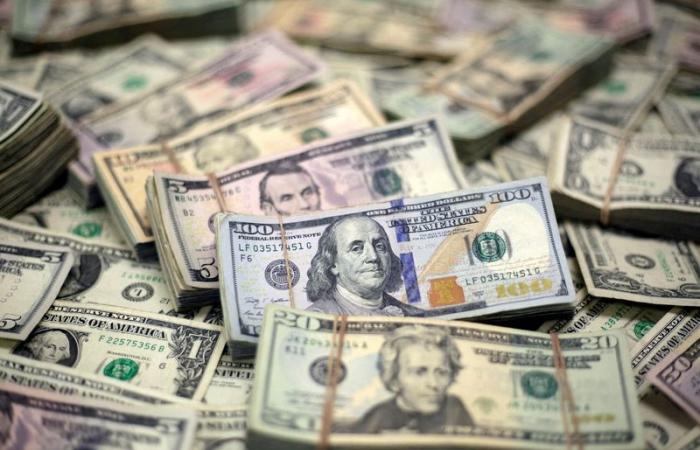Traders looking to make the most of the falling U.S. dollar are looking at the relative strength of economies around the world as rate cuts from global central banks shake up currency markets.
The U.S. dollar index fell 4.8% against a basket of currencies in the third quarter of 2024, its worst quarterly performance in almost two years. Pressure on the US currency increased after the Fed made a 50 basis point cut last month, the first since 2020.
How much the dollar falls and which currencies benefit will largely depend on yields. For years, yields in the United States have been higher than those in most developed economies, boosting the dollar’s appeal relative to its peers.
This situation is changing, with the Fed and most other central banks cutting interest rates to preserve economic growth. Many traders who bet against the dollar do so through currencies whose yield differential with the dollar is expected to narrow.
Net bets on a weaker dollar reached $14.1 billion in futures markets, the highest level in about a year, according to data from the Commodity Futures Trading Commission. However, the path to the dollar’s decline will likely be strewn with pitfalls.
The continued strength of the US economy could limit the extent of the Fed’s rate cuts, complicating the prospect of a further decline in the dollar. Furthermore, the US presidential election threatens to inject volatility into currency markets in the coming weeks.
“It’s not necessarily about selling the dollar and buying everything else,” said Jack McIntyre, portfolio manager at Brandywine Global. “You have to be a little more selective.
While the dollar index is flat for the year, it is down about 5% from its April high as the currency has fallen against several other developed market currencies, U.S. yields having fallen pending easing of the Fed’s monetary policy.
Economic data could be the catalyst for significant moves in the days to come.
Eurozone inflation fell below 2% for the first time since mid-2021 in September, strengthening the case for a rate cut by the European Central Bank this month, a source potential weakness for the euro.
On the US side, labor market data released on Friday could help determine the extent to which the Fed could cut interest rates for the rest of the year.
Although futures markets are pricing in a further 70 basis point cut, a high figure could strengthen the case for more moderate policy easing. However, “if the U.S. economy enters a slowdown, the market will price in more cuts in the curve, which will weaken the dollar,” said Christian Dery, head of macroeconomic strategy at Capital Fund Management.
Paresh Upadhyaya, director of fixed income and currency strategy at Amundi US, said he was on the lookout for “idiosyncratic stories such as widening interest rate differentials caused by a divergence in monetary policy.
Its plays on a weaker dollar include positions in the Norwegian krone and the Australian dollar. Norway’s central bank recently kept its benchmark interest rate at its highest level in 16 years, signaling that any cuts will have to wait until early 2025. Australia’s central bank held its rates last week and said that it was unlikely to reduce interest rates in the short term.
Mr. Upadhyaya also strengthened his position on the Brazilian real. Unlike many of its peers, Brazil’s central bank raised rates last month as it seeks to tackle a challenging inflation outlook. The Brazilian real has lost about 10% against the dollar this year.
The Japanese yen could also find additional support from divergent central bank policies, according to investors. The Bank of Japan tightened rates to 0.25% in July in a historic shift from a decade-long stimulus program aimed at boosting economic growth.
Although the Bank of Japan has indicated it is in no rush to raise rates further, the narrowing gap between Japanese and U.S. rates has already helped the yen rally 13% from its low. 2024 level against the dollar. Net bullish bets on the currency against the dollar total $5.8 billion, according to CFTC data.
“With global central banks also starting to cut rates, the yen will be the biggest winner against the dollar,” said Natsumi Matsuba, head of foreign exchange and portfolio management at Russell Investments.
An analysis of currency valuations based on metrics such as purchasing power parity and real effective exchange rates, published by BofA Global Research last month, showed that the yen and the Norwegian krone are among the most popular currencies. most undervalued in the developed world. The dollar and the Swiss franc are the two most overvalued currencies.
Regardless of their positioning, however, investors must contend with the potential volatility surrounding the US presidential election, scheduled for November 5.
The uncertainty in the weeks leading up to the vote could push up the dollar, a popular safe haven. Many investors also believe that a victory for Republican candidate Donald Trump could support the dollar.
“The wild card in any current forecast for our currency is the U.S. election,” said Mr. McIntyre of Brandywine, who remains bearish on the U.S. dollar, but less so than before the currency’s recent slide. “That’s why it’s difficult to be very convinced.






